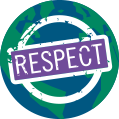Considering the intrinsic transnational nature of trafficking, the partners of the project “Development of a Transnational Referral Mechanism for Victims of Trafficking between Countries of Origin and Destination – TRM-EU” decided to develop a comprehensive set of guidelines for the implementation of a transnational referral mechanism to ensure thorough assistance to trafficked persons during the phases of identification; first assistance and protection; long-term assistance and social inclusion; return and social inclusion; criminal and civil proceedings.
The TRM-EU Guidelines are meant to provide practical measures and recommendations in order to carry out transnational referrals. They take into consideration all necessary steps for the local and national referral mechanisms. This should not be seen as a contradiction; on the contrary, the TRMEU Guidelines are an instrument that complements the NRMs. As a matter of fact, a transnational referral mechanism can be effective when it is built on standard operating procedures that are a result of efficient national and local referral mechanisms, which are in turn based on common standardised operations.
The TRM-EU Guidelines shall therefore be considered as a user-friendly tool to shape and put into practice wide-ranging local, national, and transnational referral mechanisms. Such mechanisms may differ due to dissimilar national regulations and practices in place. However, in order to be successful they need to be institutionalised and based on co-operative frameworks that include all concerned state and non-state actors, and these need to be specifically trained and regularly updated to provide qualified assistance to trafficked persons. The implementation of a multiagency and multidisciplinary approach as well as the adoption of a certain level of flexibility are key-components of any local, national, and transnational referral mechanism to respond to the specific circumstances and meet the needs of the individuals assisted.

